Still alive and kicking for many years on
After having studied trends in telecom for 30 years, it feels like we are in exciting times of change. The change might be as fundamental as 20 years ago when youth started guiding telecom into the future. This time it is predominately about utilitarian digitised processes rather than new exciting toys.
Yes, some gadget-loving early adopter consumers and device industry are eager for the next big revolutionary thing in devices. It has even been stated that the smartphone as we know it, will not exist in some years. However, from my perspective smartphones, as we know them, and as defined by the iPhone, are unlikely to die within few years. Rather, we have not yet fully leveraged from the iPhone concept. Yes, for some users the future is already here, but it is unevenly distributed, and as a society, we are still to experience the full strengths of the concept. Instead of wishing its death we should learn from the iPhone dominance and realise that the idea is likely to stay for foreseeable future. The fact is that so far the Android community has only managed to grasp the leftovers in either techy or price sensitive buyers.
Going back to my 30 years with smartphones, only iPhone is close to the utility we foresaw within ABB Industrial Automation in 1987. That smartphone vision grasped me and made me switch from automation to telecom. Seven years later, in 1995, I was involved in Ericsson first smartphone concept: this led a few years later to the first commercial Ericsson smartphone. Neither we nor our close competitors of the time managed to get the smartphone acts together; we failed on the user experience. Of course, we at Ericsson together with Sony wanted to be the ones that grasped this tremendous opportunity, but I still love the year of 2007 when Apple made our dreams of a utility reality and changed the world forever. However, it also changed Apple forever. From being a brand for explorative and creative people the iPhone and mobile Internet made Apple become a toy supplier for adventurous and playful individuals. I believe time have now come when smartphones go back to Apple’s brand origin and become dominantly a tool rather than a toy. The link between cooperating human and artificial intelligence in the era where customer value comes from efficient, cost saving, resource lean and convenient digitised processes.
Challenge traditions and beliefs
Please let me explain my thinking and why I think we have just started the journey, and why the utility thinking is so critical: It will have huge effects on the future for everybody and everything. It will affect how a diverse business community relates to and shape things from artificial intelligence, augmented reality, car design and of course smartphone design. It will shift what customers are prepared to pay for, from the excitement of the moment to lasting benefits.
Shaping the future is very much about challenging your traditions and beliefs. Among others, Geoffery Moore in his book “Crossing the Chasm” taught us how to navigate the turbulent waters of innovation. The simple and guiding idea is to focus value creation on potential customers that are positive to change; as well as innovation; who have flexible mindsets; and eager to take the risks of being first to get the chance to harvest on the next exciting step. The great learning is that it is not worth the effort of innovation to directly address customers who believe the present is more acceptable than what may come tomorrow, have a clear opinion of how things should work and are less flexible to change.
Early adopters are diverse and divided So far, I think most of us agree. However, Moore has simplified the challenge in getting innovation to stick. Let me introduce The market map, a two dimensional map of peoples personality in relation to consumption and acceptance of new ideas and concepts.
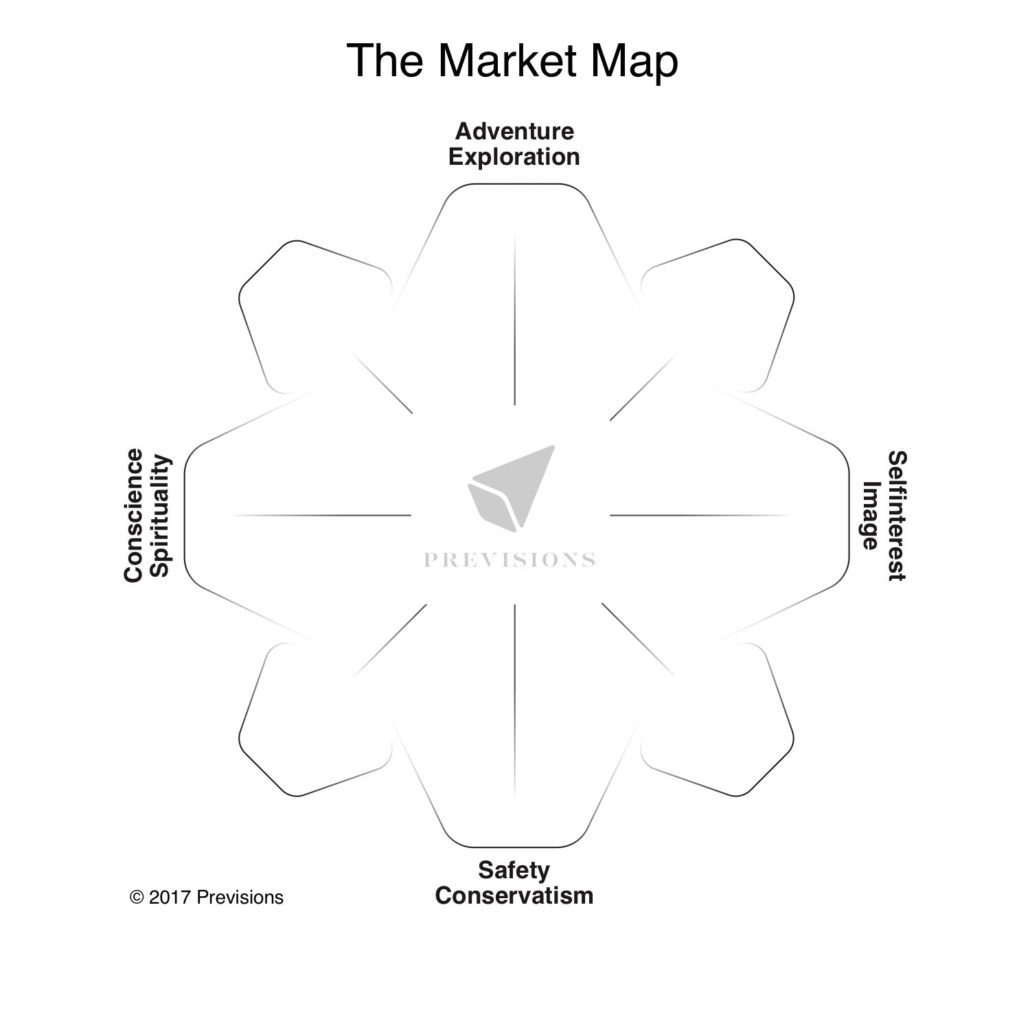
For a typical market you have people distributed everywhere on the map.
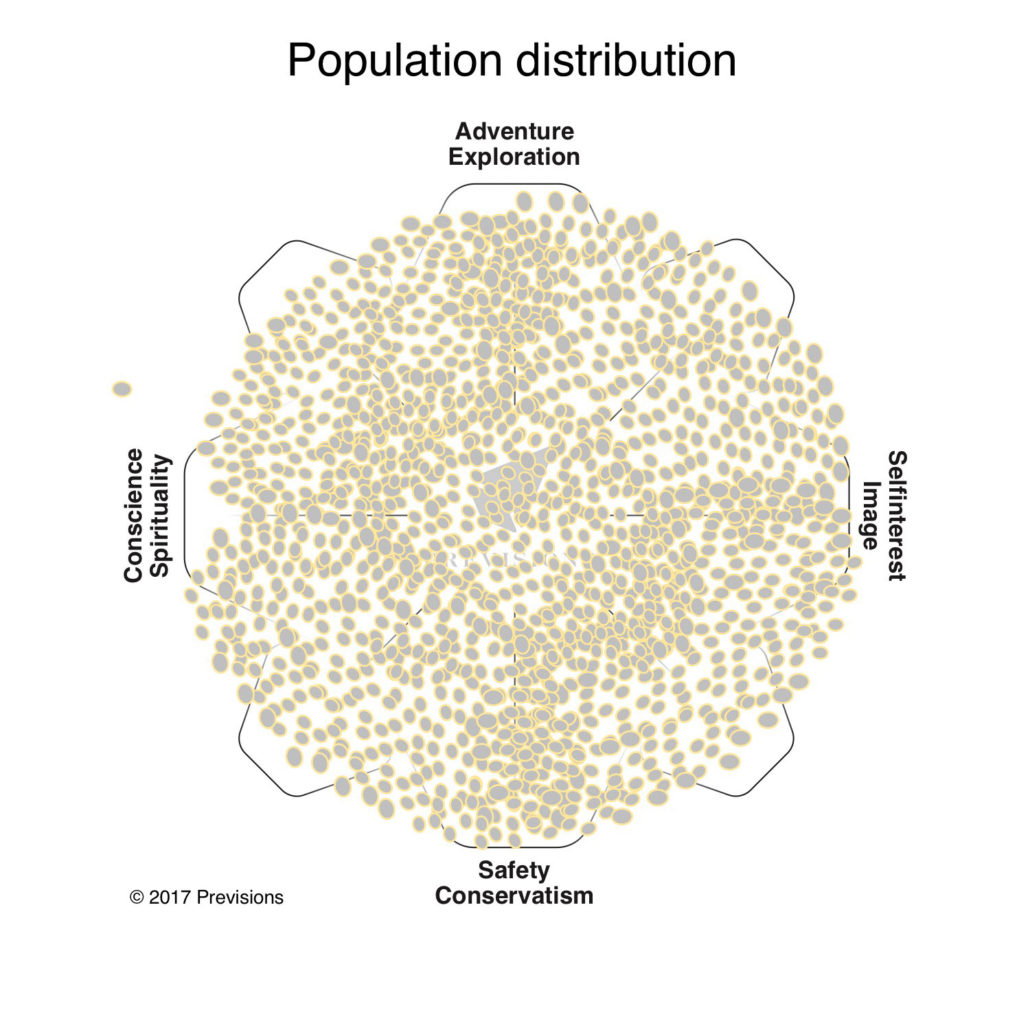
In simple terms 25 % of the population is found in each quadrant of the map. You will find the younger population dominating north east, and the older the south west. Others are distributed more or less all over.
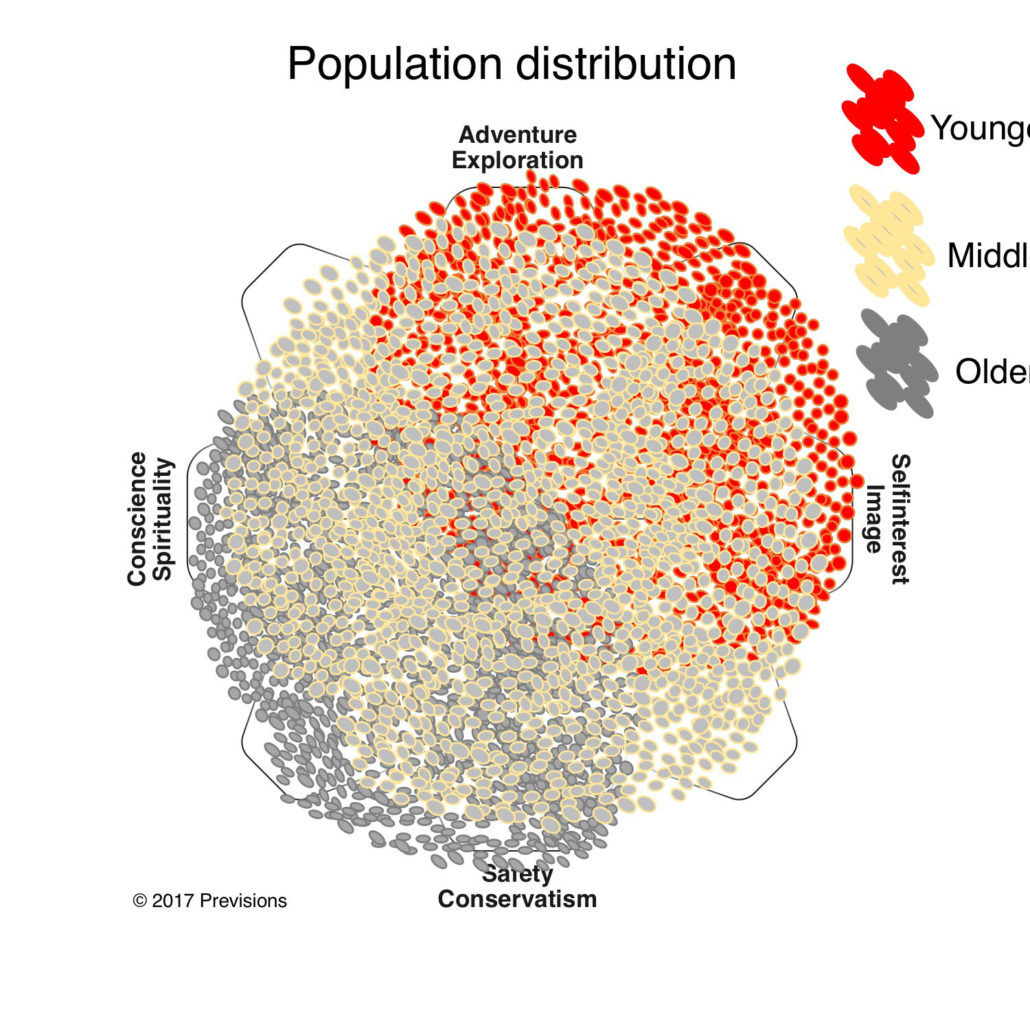
Geoffery Moore’s target for innovation “positive to change as well as innovation and who have flexible mindsets, eager to take the risks of being first to get the chance to harvest on the next exciting step” are found in the north.
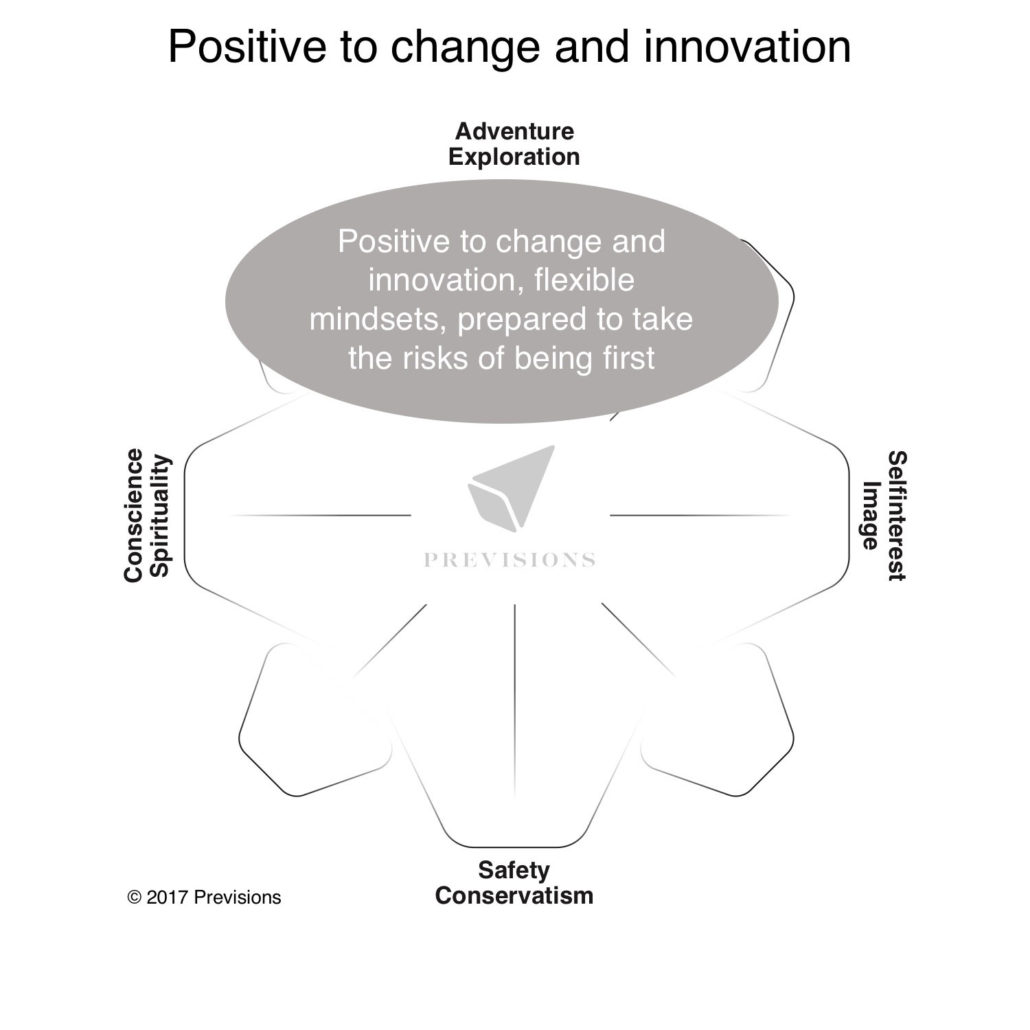
While innovative friendly customers are united by continuously looking for the latest are early adopters more diverse and divided. Some early adopters have high concerns for inclusive lasting benefits, convenience and sustainable solutions. These are found in the north west of the market map, where the grey and blue fields intersect.
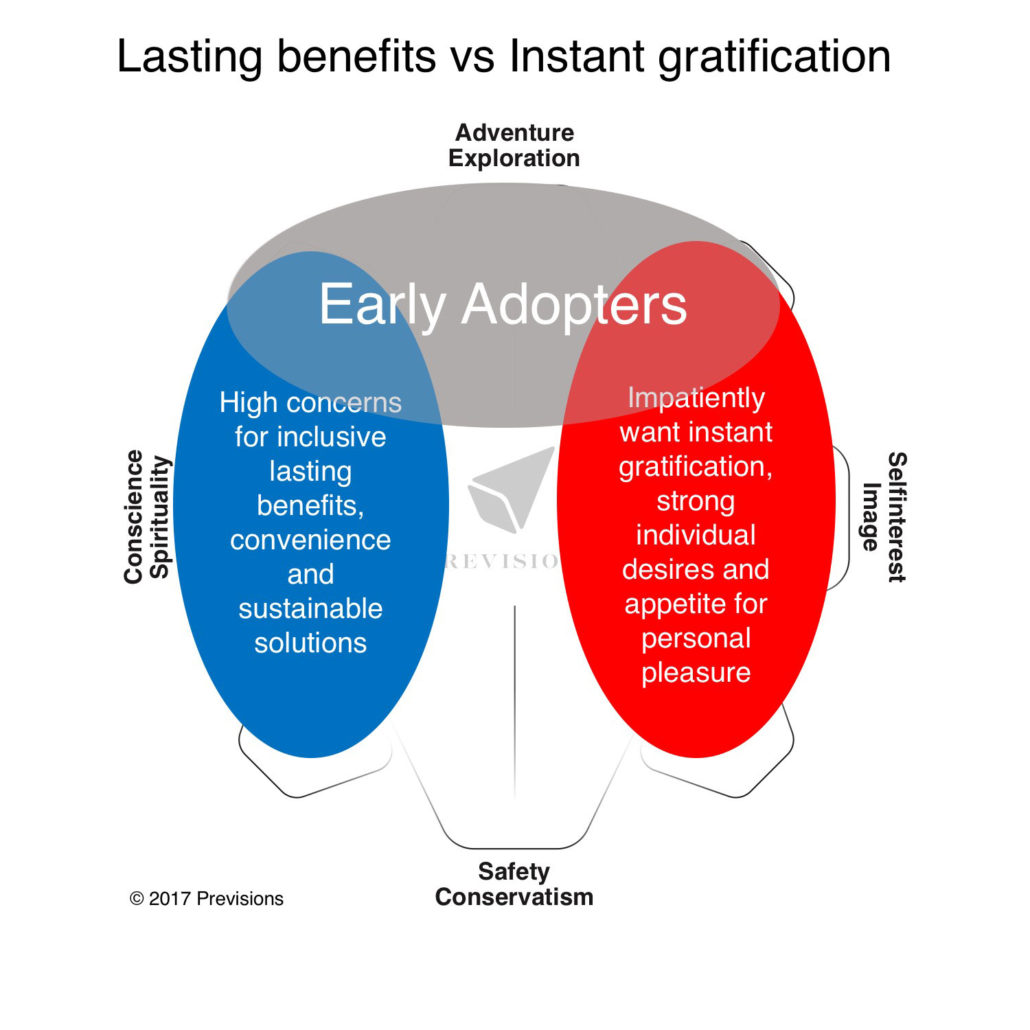
Other early adopters impatiently want instant gratification, have strong individual desires and healthy appetite for personal pleasure. These are found in the north east of the map, where the grey and red fields intersect.
North West of the Market Map is the natural start for adoption of completely new so far unknown TOOL concepts. The more utilitarian and the more revolutionary the more likely the first adopters of new infocom TOOLs will be found in North West. To increase likelihood of successful adoption the offer should be tailored for the TOOL adopters. This include product composition as well as marketing messages.
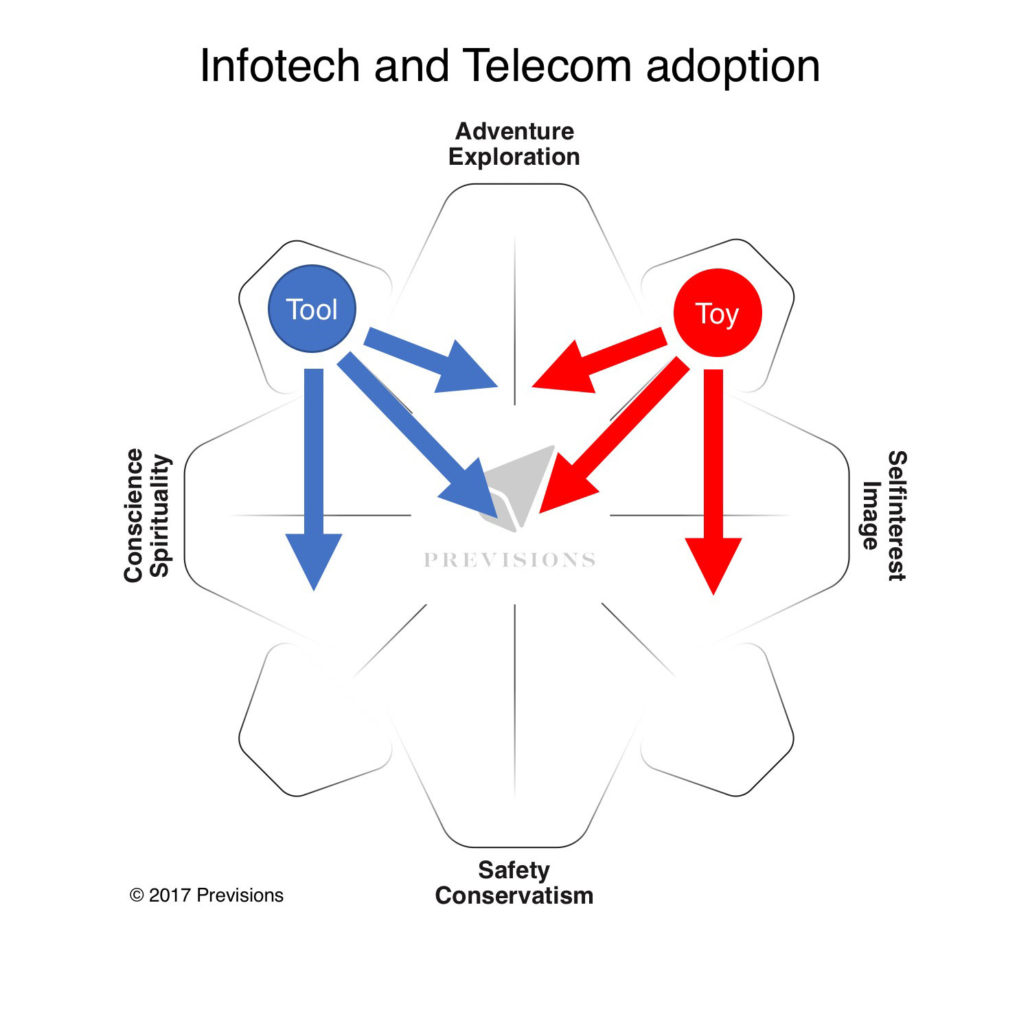
North East of the Market Map is on the other hand the natural start for adoption of completely new TOY concepts. The more revolutionary the more likely the first adopters of new infocom TOYs will be found in North East. In this case success comes from an offer tailored for the TOY adopters personality and needs.
While early adopter youth are dominated by a more immediate gratification toy desire are early adopter professionals more into utilities with lasting benefits.
As said, North East and North West of the Market Map are the natural start for adoption of completely new revolutionary and up till now unknow concepts. Let’s look at three concrete examples to further understand the adoption logic.
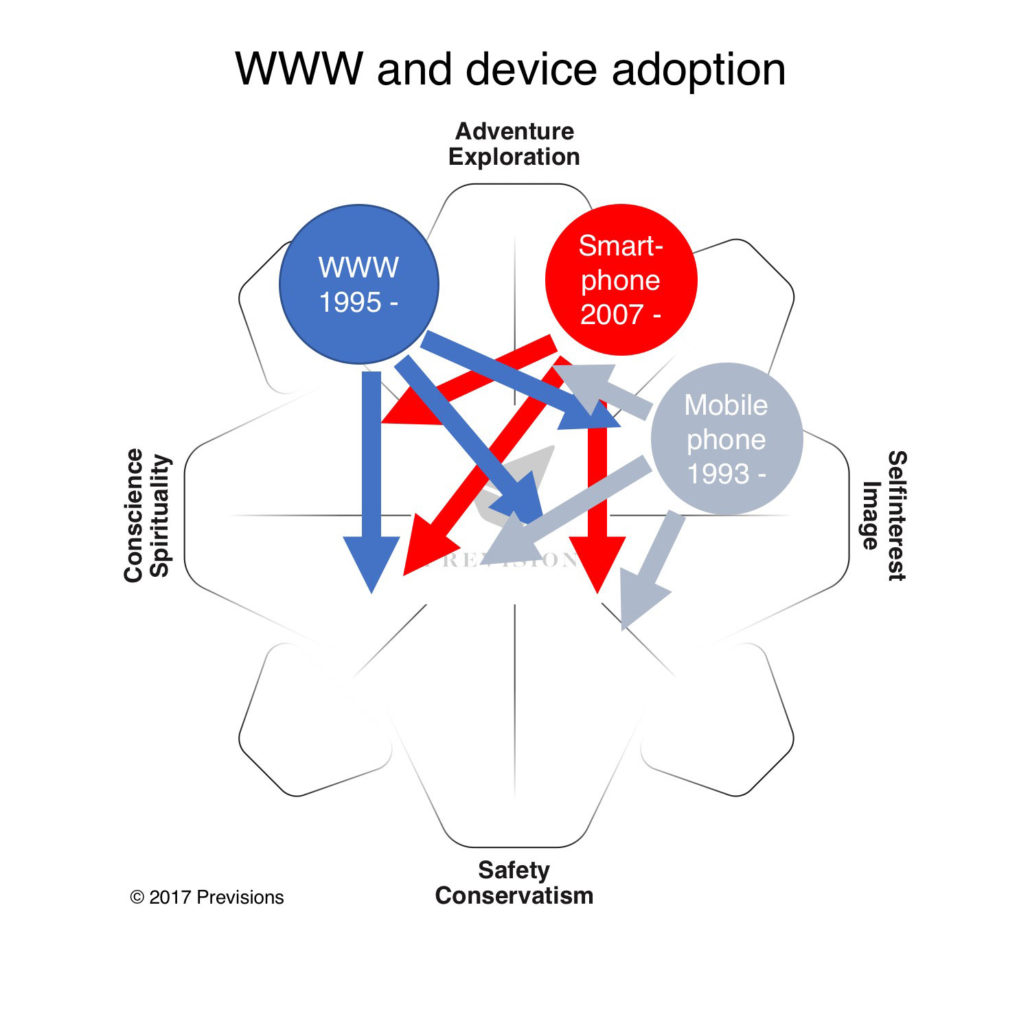
Case Mobile Phone adoption
When the mobile phone entered the market in the early 90s, adoption started in the very East of the Map.
This case immediately high-lighted the necessity of a solid analysis of a concept’s benefits and complexity before launching it into the market. To the market in the early 90s the mobile was just a small telephone without a cable. It didn’t require much imagination to understand the benefits, consequently a not so risky choice. Individualistic people with an impatient personality and/or mobile lifestyle/profession were eager to adopt to get instant benefits. Those mobiles were out of reach for youth, due to the very high prices of the phones. This further contributed to a more conservative early adopter than what is normal.
Case WWW adoption
When the first browsers, like Netscape, entered the market it was not instantly obvious how powerful these tools would be. However, knowledge and information hungry explorative people could imagine the potential. This was to them all facts and knowledge of the world at the finger tip envisioned. They also had the patience with early flaws as they wanted to be part of the journey into the future.
Case Smartphone adoption
iPhone was not the first smartphone on the market, but when it hit the market in 2007 it really personalised what is a playful infotech TOY. Where its predecessors had failed, it excelled. From one perspective the iPhone repeated the early 90s success of telephony in your pocket with the promise of internet in your pocket/purse. However, internet was at this time not as integrated in everybody’s life the way the 100 year old telephone had been. Internet usage had matured a lot since 1995, but it was still dominated by explorative people. It was also a very weak mobile internet connection that Apple provided initially, users had to rely mainly on wifi access. The success was instead very much about the amazing user experience. App store and Apple opening up for APPs from anyone and anywhere gave a further wow-factor and stimulated an idea-explosion. Multiple finger touch brought the instant gratification, colour screen and revolutionary design further added the pleasure. The APPs also enabled spontaneity in the complex contexts of mobile use cases. At the same time the concept still required significant imagination and wish to experiment from the users.
A utility future
After 20 years of device race, I believe times have come where early adopter with a more utilitarian motive gain influence over the toy early adopter not just for smartphone trends but telecom trends overall.
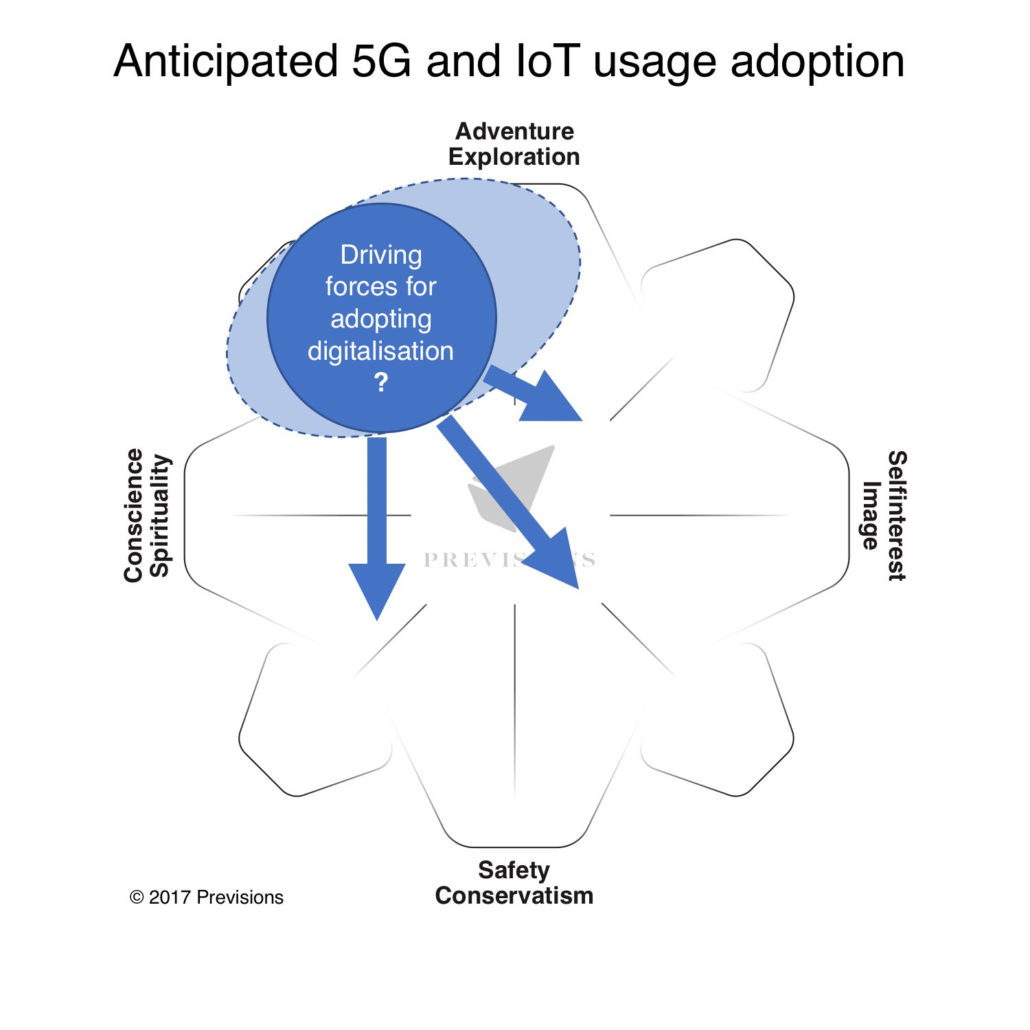
This drive comes from many forces
- On a macro level, the push comes from the desire for a more sustainable, inclusive and equal society.
- From technology development, 5G and internet of things will drive the whole mobile industry towards utilities of industrial automation and automation overall. Automation has never been about fancy instant gratification, but instead very much hardcore serious lasting benefits and cost savings.
- The increased bandwidth possible in 5G is likely beyond the smartphone and mobile lifestyle requirements and will rather be a utilitarian fibre replacement.
- With the increasing internalisation of smartphones in everyday life, they become too important to stay as toys, and both Internet and Apple are gradually sliding back to their origin of providing utility.
- A growing insight that the smartphone is an excellent foundation for utilitarian benefits of various kinds. APPs for Mobile banking, navigation, document scanning, train, flight tickets etc take more and more attention away from games.
Apple being stuck with an increasing utilitarian iPhone might not be what the shareholders want to hear, but it seems the likely future.
For industry, it means that it is time to go back to the functional logic before youth surprised us with their endless desire for personal mobile communication.
This thinking is kind of fascinating for me personally as I was one of those that fought hard to convince sceptic executives that youth and 3G were the future and that future phones will have other colours than black. After been interviewed by CNN as the crazy man believing in youth, I never thought that I had to say that youth importance going forward might be less, only 20 years later. Yes, youth is still important particularly in young economies, but less as the ultimate early adopter.
The from A to B future
So how big is the difference between tool logic and toy logic? It is as big as the difference between a Toyota and a BMW. As big as the difference between considering the smartest, safest, most convenient sustainable way to go from point A to point B, versus looking forward to a driving experience in the vehicle of ultimate performance. It is as big as the difference between sharing and owning. It is as big as the difference between blue and red. It is as big as the difference between saving and spending. It is as big as staying in control and let go.
Let’s stay with the difference of A to B transport versus the ultimate driving experience. People today buy cars for different reasons. Particularly premium car brands build their existence on differentiating their offering from the car as a utility.
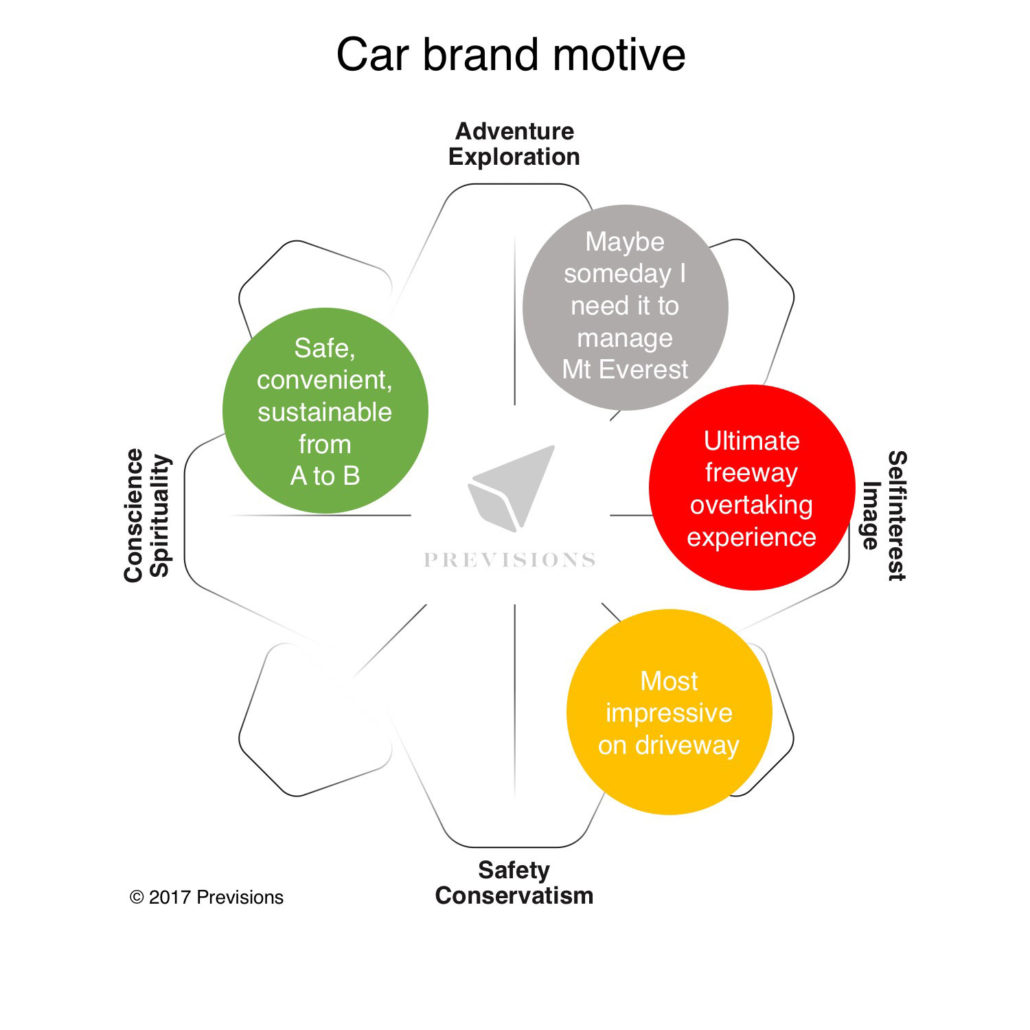
Self-driving cars will enter the market, no doubt. But how and by whom and for what reason? Imagine if society enforce the concept of self-driven shared cars as the main way forward. This makes a lot of sense from city planning and sustainability perspective. This would put everything in value creation upside down for basically all premium car brands.
- What should we help people impress with on the drive-way if they don’t own the car?
- How can people show that our cars have more muscles than other brands if people don’t have control of their cars?
- How can we help people to achieve their dreams and dare to grasp opportunities if the cars are not theirs?
Yes, indeed its exciting and revolutionary times, and if my hypothesis hold true:
- It will affect artificial intelligence (AI) and machine learning (ML) to rather be packaged as “Intelligence Amplification”, extending the information processing capabilities of the human mind rather than being autonomous smarties.
- It will affect Augmented Reality (AR) to give lasting benefits beyond exciting games.
- It will drive self-driving cars towards a public transport alternative. Yes, tech interested individualistic BMW buyers might still be the first to buy self-driving cars. However, are they the one’s that will give up their driving desires and let society’s sustainable point A to B public transport logic take command of their car?
- It will drive smartphones and apps towards ultimate simplicity and inclusiveness.
- The dominating use cases and form factors of smartphones are so high that significant contributions beyond simplicity, durability, reach and apps are unlikely.
Welcome to
- Our new guides into the future, the serious early adopter professional.
- The era where customer value comes from efficient, cost saving, conveniently digitised processes.
Goodbye to
- Margins and dominance from exciting technology per se.
Long live the Smartphone!

Henrik Pålsson
Chief Visionary Officer
Previsions AB



